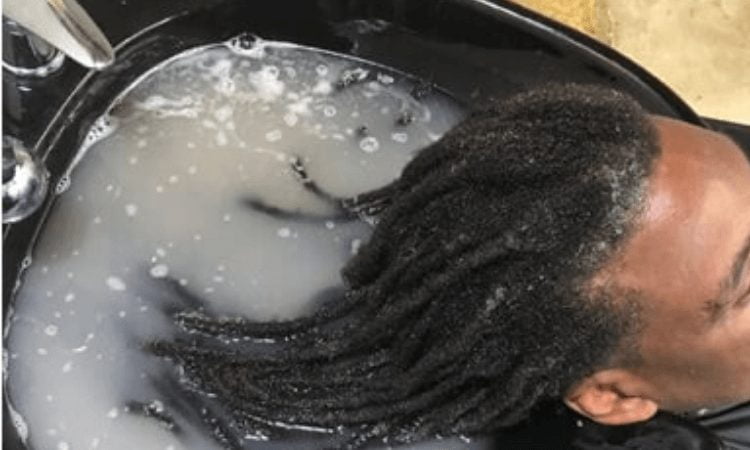
Dreadlocks sometimes referred to as locs, are a distinctive and lovely hairdo with a deep cultural meaning. Although dreadlocks are frequently thought of as a low-maintenance style, maintaining healthy and flourishing locs does require some routine. You’ll get all the information you need from this guide to create a dreadlock hair care routine that will maintain the greatest possible appearance for your locs.
Understanding Your Dreadlock
It’s important to comprehend the nature of dreadlocks before getting into the details of dreadlocks care. Dreadlocks, in contrast to conventional hairstyles, involve letting the hair organically mat and lock together over time. Although it takes time and effort, the outcome is a distinctive haircut with a texture that captures your personality.
Benefits of Having a Dreadlock Hair Care Routine
There are many benefits to having a dreadlock hair care routine, both for the health of your locs and for your overall experience with them. Here’s a breakdown of some key advantages:
- Encourages Growth: A consistent routine that includes deep conditioning, frequent cleanings, and attention to the scalp fosters the development of healthy hair, resulting in dreadlocks that are thicker and more resilient.
- Reduces Breakage: Keeping your locs healthy and intact requires routine maintenance, which includes retwisting your hair and using the right products to decrease loose hair and avoid breakage.
- Reduces Down Frizz: Proper hydration and detangling methods combined with dreadlock hair care routines help reduce frizz and create smoother, easier-to-manage locs.
- Preserve Shape: You can keep your dreads from unraveling or becoming loose by giving them regular retwists and applying locking solutions as needed.
- Decreased Itchiness: One of the most common discomforts related to dreadlocks is itching, which can be avoided with a clean scalp free of product residue and accumulated dirt.
- Improved Manageability: Maintaining your locs regularly makes them easier to style and control. You’ll be able to style them more confidently and spend less time detangling.
- Maintains Neat Appearance: Keeping your dreads in check with a routine enables you to confidently express your style while keeping them fresh and tidy.
- Boosts Confidence: Taking good care of your dreadlocks demonstrates your commitment to their well-being and aesthetic appeal. This may inspire pride and self-assurance in your style.
Dreadlock Hair Care Routine
To preserve the health, vibrancy, and longevity of your dreadlocks, whether you’re a novice or experienced, you must know how to properly care for them. It only takes dedication and a little bit of your time to achieve this.
Washing Your Dreadlocks
Dreadlocks require regular washing to remove built-up sweat, dirt, and product residue. However, frequent washing can be counterproductive due to their locked nature. Aim for a wash every 1-2 weeks, depending on your scalp activity and lifestyle. Opt for a gentle, sulfate-free shampoo specifically formulated for locs, which effectively cleanses without stripping away natural oils or causing frizz. Incorporate a loc wash into your routine, made with natural ingredients, to gently cleanse dreadlocks without leaving residue. For an extra clarifying cleanse, use an apple cider vinegar (ACV) rinse as a final rinse after shampooing, which helps remove buildup and adds shine.
Conditioning Dreadlocks
Dreadlocks require deep conditioning every 2-4 weeks to maintain their health and hydration. Look for products made for locs that penetrate the hair shaft without weighing down the locs. For a natural alternative, create a DIY deep conditioner using avocado, olive oil, and honey. Apply the conditioner to wet hair, cover it with a plastic cap, and heat for 15-20 minutes for maximum absorption. Rinse thoroughly with cool water.
Scalp Care
Maintaining a healthy scalp is crucial for hair growth. Regular scalp massages improve circulation and promote hair growth. Applying lightweight oils like jojoba or grapeseed oil keeps the scalp moisturized and prevents dryness. Tea tree oil, with its natural antimicrobial properties, can help combat scalp itchiness and dandruff. Dilute a few drops with jojoba oil before applying it to your scalp.
Maintainance and Styling
To maintain the shape of dreadlock, retwist them every 4-8 weeks, either by yourself or consulting a loctician but then, overdoing retwisting can cause tension on hair and scalp, leading to breakage and thinning. Use dreadlock maintenance products like locking gels and sprays sparingly to promote a tighter hold and avoid product buildup. Protect your dreadlocks while sleeping by wearing a satin or silk scarf or using a silk pillowcase to reduce friction and minimize frizz.
Don’t be afraid to get creative with your dreadlocks hairstyles! From buns and braids to ponytails and accessories, there are countless ways to style your locks and express your individuality.
Frequently Asked Questions and Answers on Dreadlock Hair Care Routine
1. How often should I wash my dreadlocks?
Dreadlocks should be washed every 1-2 weeks, depending on hair type and lifestyle, to prevent dryness and buildup, and to maintain natural oils.
2. What type of shampoo should I use for dreadlocks?
Choose a residue-free shampoo specifically designed for dreadlocks, free from harsh chemicals and heavy oils that can cause buildup.
3. Can I condition my dreadlocks?
Yes, Choose a lightweight, residue-free conditioner or dreadlock-specific moisturizer for dreadlock conditioning, apply sparingly, focusing on mid-lengths and ends to avoid buildup.
4. How do I prevent my dreadlocks from becoming dry and brittle?
Regularly use a leave-in conditioner or moisturizing spray for dreadlocks, and avoid over-washing and excessive heat styling to maintain moisture.
5. Should I retwist my dreadlocks regularly?
Excessive retwisting on dreadlocks can cause hair and scalp tension, leading to breakage and thinning, so it’s crucial not to overdo it.
6. How do I prevent my dreadlocks from unraveling?
Regular palm rolling and avoiding heavy products or excessive manipulation can help tighten and shape dreadlocks, preventing unraveling and preventing hair loss.
7. Can I style my dreadlocks in different ways?
Yes, Dreadlocks can be styled in various ways, including buns, braids, ponytails, and accessories, allowing you to find the style that suits your individuality.
8. How do I protect my dreadlocks while sleeping?
Wearing a satin or silk scarf or pillowcase can help prevent dreadlocks from becoming tangled or flattened during sleep, as these smooth fabrics reduce friction and frizz.
9. How do I deal with odor in my dreadlocks?
Regular washing practices can prevent dreadlocks odor, and natural deodorizing sprays or essential oils can maintain freshness between washes.
10. Can I color or dye my dreadlocks?
Yes, Dreadlocks can be colored or dyed using a formulated hair dye, avoiding harsh chemicals like bleach, as they can cause damage and weaken the hair.
Conclusion
Maintaining healthy and vibrant dreadlocks requires a consistent hair care routine and proper hygiene practices. By following these care routines, you can keep your dreadlocks looking their best and embrace your unique style with confidence. Remember to be patient and gentle with your locks,

Leave a Reply